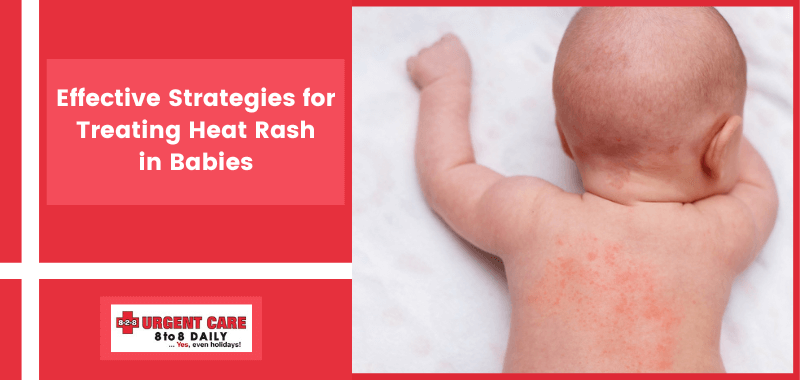


Blockages in the sweat gland ducts due to excessive perspiration result in the sweat being trapped in the epidermis and the dermis. This leads to inflamed and itchy skin with clusters of red bumps. While people of all ages can have heat rash, babies are more vulnerable to this condition as their sweat ducts are still immature and clog faster. According to research, it is estimated that between one and three weeks of age, heat rashes affect around 4% to 9% of infants. Our blog will provide you with in-depth information about what causes heat rashes in babies and effective tips to prevent them.
Doctors classify heat rashes in babies into four types based on their appearance and severity of symptoms. They are:
Also referred to as prickly heat, this type of heat rash is the most common and is caused due to blockage in the mid-epidermal sweat glands.
This is a mild heat rash caused by the clogging of sweat ducts in the epidermis.
This is a rare but severe condition with intense discoloration and inflammation caused by the leakage of sweat into the dermis due to clogging in sweat glands.
At times, inflamed prickly heat or miliaria rubra develops into pus-filled blisters.
While obstruction in the sweat glands is the main cause of heat rash, other factors that can stop sweat from evaporating and cause heat rash are:
The skin in the armpits, neck, and groin rubs against the adjoining skin preventing sweat from flowing out of the pores.
Infants often have skin folds in various body parts, including the neck and inner thighs, which trap heat and sweat, leading to heat rash.
Dressing your baby in tight or too-warm clothing may obstruct the free passage of sweat from the ducts onto the skin’s surface.
Lotions and oils can lead to the pores on the skin being clogged, resulting in heat rash.
Heat rash, in general, has the following symptoms:
However, different types of heat rash may show specific symptoms:
A heat rash may vary in appearance on different skin tones. While on lighter skin, they appear as tiny bumps on a patch of reddish, itchy skin, darker skin tones do not usually turn red, making the rash less visible. The rash may take on a greyish, purplish, or whitish hue. For some, there is discoloration in the affected area that the doctors diagnose as post-inflammatory hyperpigmentation that resolves in a few weeks.
Heat rash is characterized by its appearance. However, for diagnosis, doctors may perform a physical examination based on the heat rash symptoms of your baby.
In most cases, heat rash treatments and prickly heat rash treatments can be done effectively with several home remedies:
Babies are at a higher risk of getting heat rash if:
To ensure that your baby doesn’t suffer from heat rash, you may follow the tips mentioned below:
Babies have delicate skin that can easily become irritated. Avoid prolonged hours outside in direct sunlight or inside near space heaters or other heat sources.
Choose loose-fitting and comfortable clothes made from natural fibers like cotton. Avoid synthetic materials that can trap heat and moisture against the skin.
Ensure that the temperature in your home is comfortable and not excessively warm. Use fans or air conditioning to maintain a cool environment during hot weather.
Opt for lightweight and breathable bedding materials such as cotton sheets and blankets. Avoid using heavy comforters or thick mattress pads that can trap heat.
If you need to cover your baby, opt for lightweight blankets or muslin cloths that allow air circulation and prevent overheating.
Ensure that your baby drinks enough fluids, especially during hot weather. Breastfeeding or offering formula frequently will help keep them hydrated.
Adding a cool-mist humidifier to your baby's room can help keep the air moist and prevent their skin from drying out, which can contribute to heat rashes.
When bathing your baby, use a mild, fragrance-free cleanser or baby soap. Avoid harsh soaps or excessive scrubbing, as they can irritate the skin.
Heat rash, in most cases, does not need medical care. However, if the condition persists or deteriorates, you must consult a provider. Our pediatric urgent care walk-in clinic in Oceanside, CA, can provide exceptional pediatric care with minimum waiting time in the most comfortable and child-friendly environment. You can contact 8-2-8 Urgent Care, and our staff will walk you through our online check-in which allows you and your child the convenience to wait at home until our team calls you. Call (760) 216-6253.